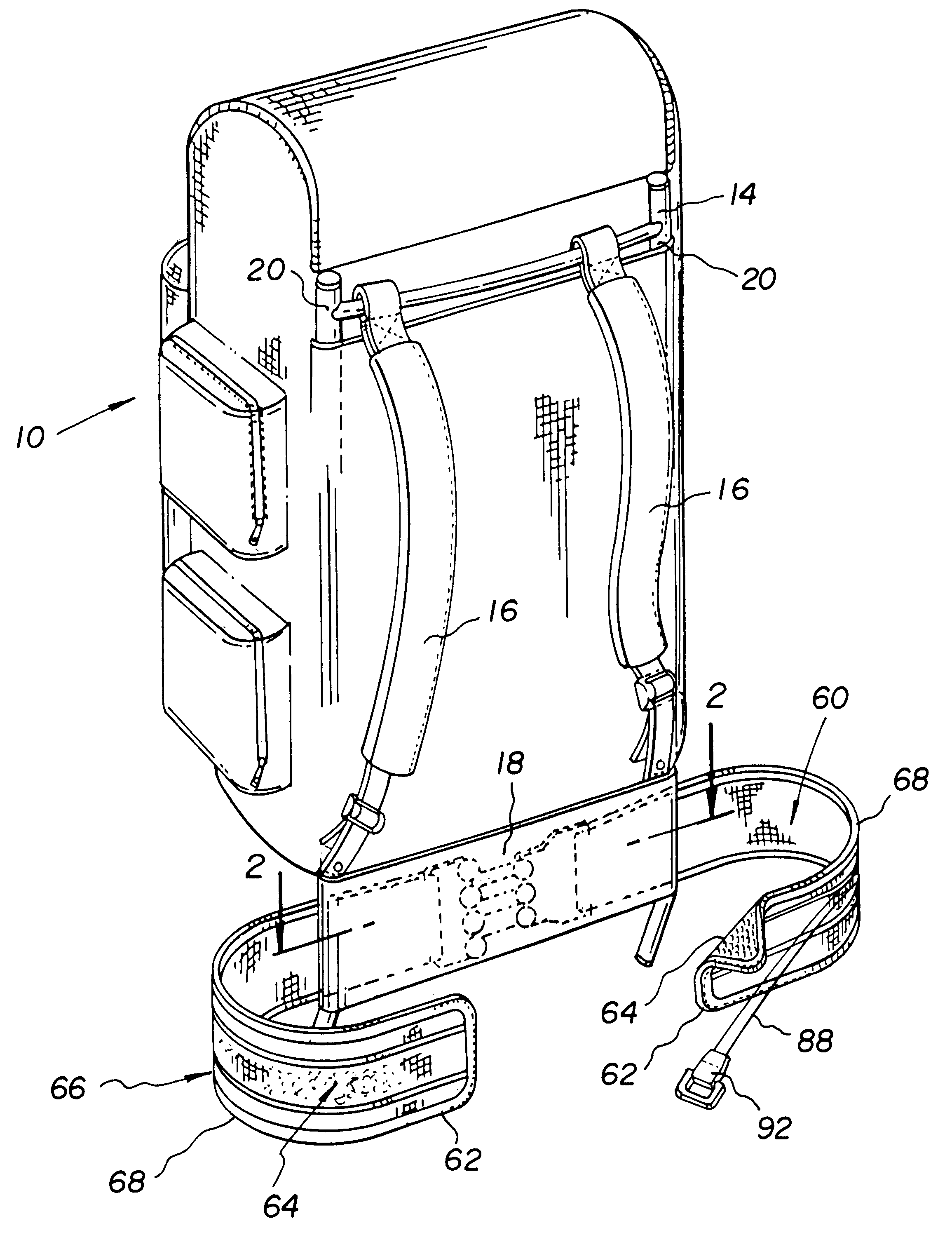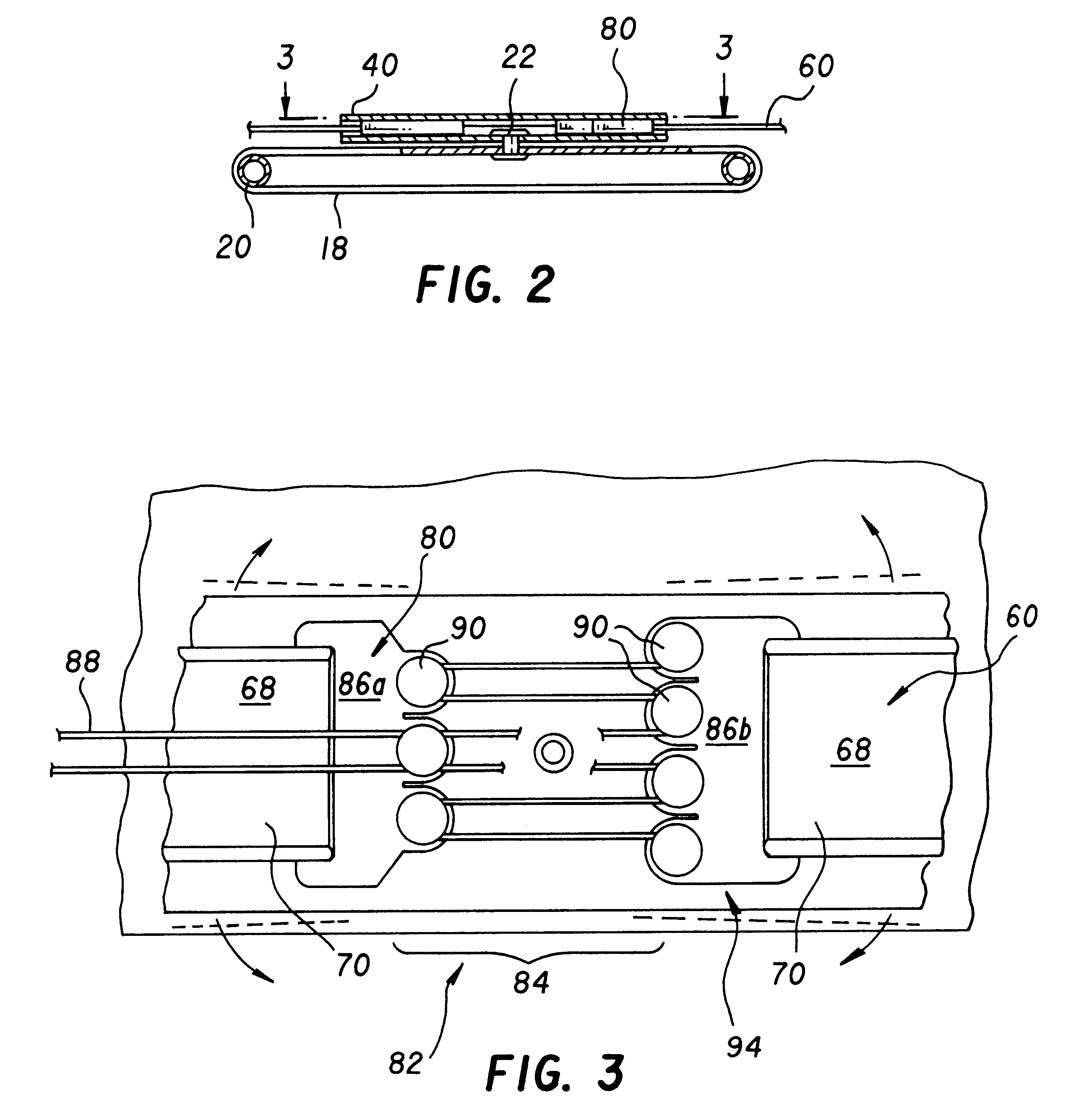Mechanical advantage backpack
a backpack and mechanical technology, applied in the field of backpacks, can solve the problems of modest improvement, back pain, discomfort, pain, even injury, etc., and achieve the effects of reducing stress on the body, improving support of the load, and efficiently and effectively compressing the hips
- Summary
- Abstract
- Description
- Claims
- Application Information
AI Technical Summary
Benefits of technology
Problems solved by technology
Method used
Image
Examples
Embodiment Construction
The invention as shown in FIG. 1, comprises a pack having a body 10 generally made of a fabric material and in one embodiment (FIG. 4) having an interior frame 12 made of lightweight metal, surrounded by fabric material making up the pack. Alternatively, the frame 14 can be external (FIG. 1) and have the pack body 10 attached thereto. In the other embodiments, no frame is provided. Shoulder straps 16 are attached to the top of the metal frame 14 or the pack body 10 itself and at a position approximately halfway down the pack in the case of the internal frame 12 and at a lower portion of the frame in the case of an external frame 14. The bottom of the pack has attached thereto or the metal frame has attached plastic or fabric sleeve 40 approximately 5 inches high and 8 inches wide.
The sleeve 40 is essentially a tube for the insertion of a lumbar sacral support (LSS) 60 as described herein below. The sleeve 40 for an internal frame backpack can be attached directly to the fabric of th...
PUM
 Login to View More
Login to View More Abstract
Description
Claims
Application Information
 Login to View More
Login to View More - R&D
- Intellectual Property
- Life Sciences
- Materials
- Tech Scout
- Unparalleled Data Quality
- Higher Quality Content
- 60% Fewer Hallucinations
Browse by: Latest US Patents, China's latest patents, Technical Efficacy Thesaurus, Application Domain, Technology Topic, Popular Technical Reports.
© 2025 PatSnap. All rights reserved.Legal|Privacy policy|Modern Slavery Act Transparency Statement|Sitemap|About US| Contact US: help@patsnap.com



